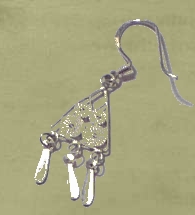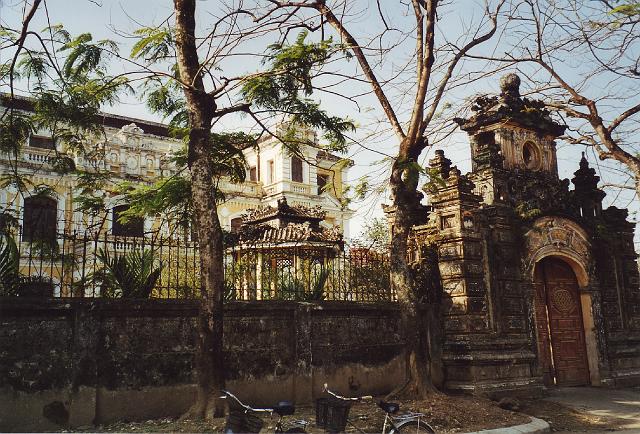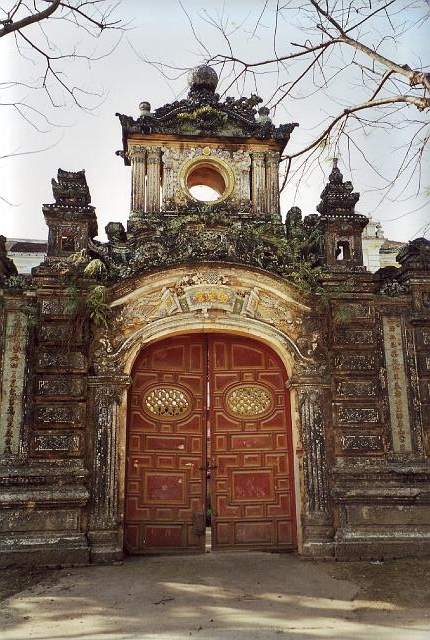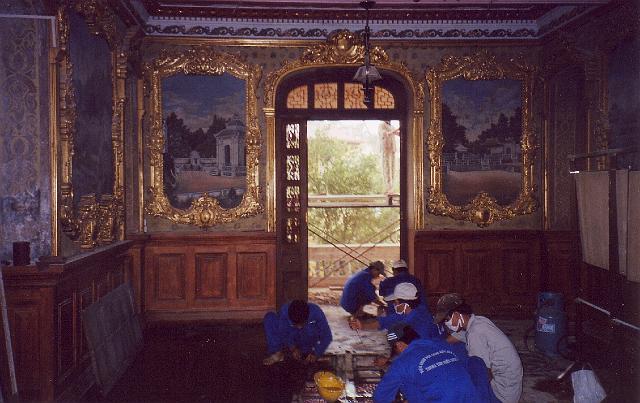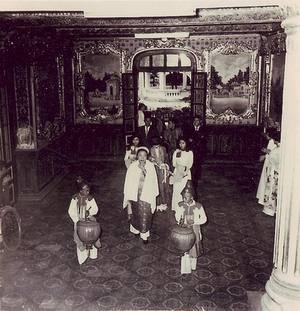|
The house
in which we lived in the 1960’s was built in 1918 by Emperor Khai Dinh on the
banks of the An Cuu River. It is known as Cung An Dinh, An Dinh Palace. Khai Dinh,
brought into power by the French in 1916, had it fashioned in the European
style, with columns, interior windows, gilded frames, patterned wallpaper and
tiles. In 1959 my father, a newly appointed math professor at the University of Hue, moved into An Dinh Palace, along with five other families of professors from the University. Not a bad deal in terms of accomodation provided with the
job. In 1961, after their wedding, my mother lived there as well. When I was born we moved into a larger apartment with a balcony overlooking the river. On my first
trip back to Viet-Nam in 2001, I went back to Cung An Dinh and loitered in the
gardens since the building was closed. I recognized the palace and the grounds,
and could compare with old pictures from the 1960’s. It was quite frustrating
not to be able to enter. In
2002,
during my round-the-world trip, I returned to Cung An Dinh to find it
hidden
behind scaffoldings. Restoration by a team from the German Conservation
Restoration & Education Projects (GCREP) was underway and the
building
seemed again off limits. Fortunately the construction foreman was nice
enough
to let me enter after I explained that I was born there and had lived
on the second floor until the age of 4. He and his team were quite
amused by the old
pictures of the place. They took pictures of the photographs, as some
features
had disappeared over the years (the small statues near the entrance,
for example),
and would be of interest for the restoration in progress. I finally
got to stroll through the rooms and looked at the old window frames, the dusty
tiles, an echo of the ones in my black-and-white photographs.
In 2011,
when I was there last, the restoration was complete. I was delighted to see
that the palace had become a museum, open to all and used by the Hue
Festival. The entrance hall had been wonderfully restored by the joint German –
Vietnamese team. I could almost picture a newlywed couple following young boys
with lanterns up the flight of stairs.
GCREP: History GCREP: Restoration
 Khai
Dinh's tomb sits on a hill overlooking paddy fields, a few kilometers
from Hue. It is a ciment edifice with a lavishly decorated interior,
where dragons and boughs of flowers are rendered in porcelain mosaic
and mirror fragments.
|


